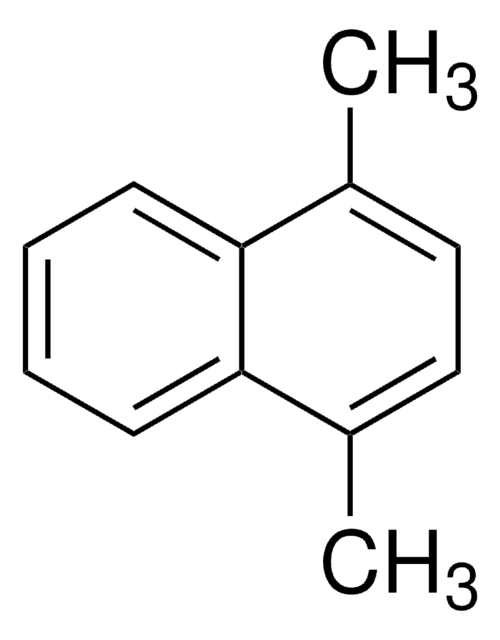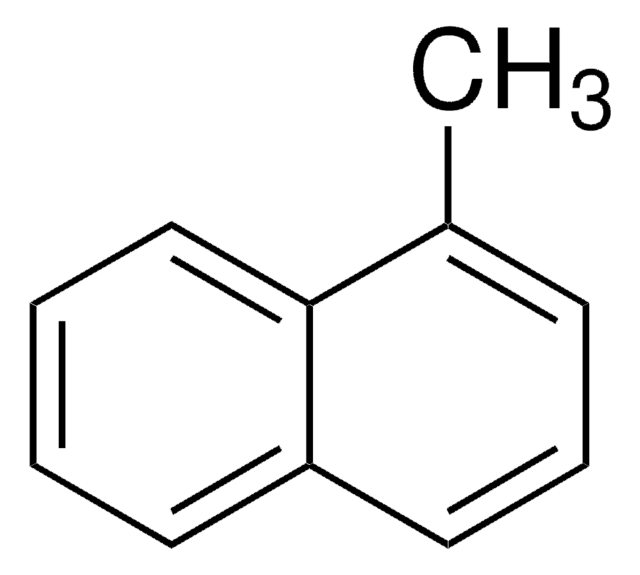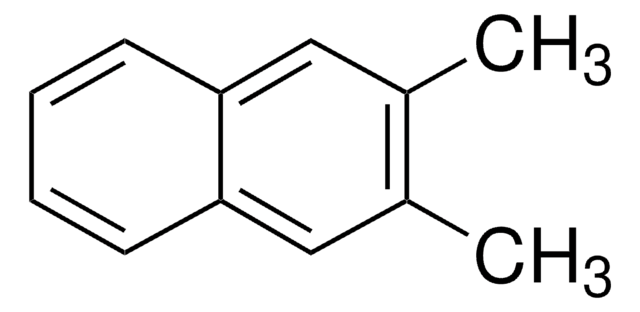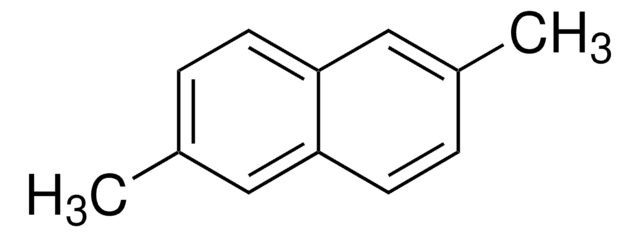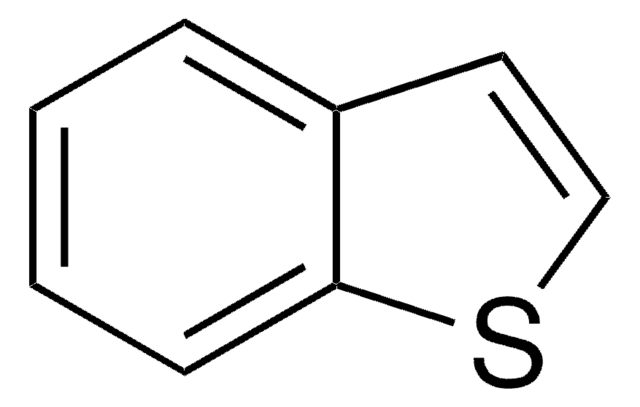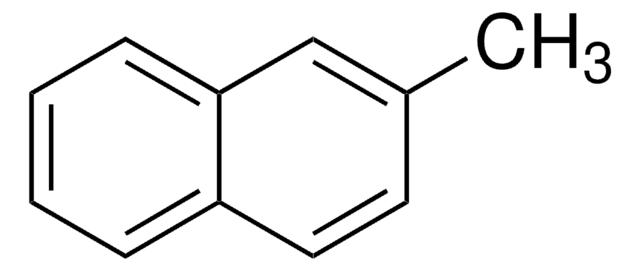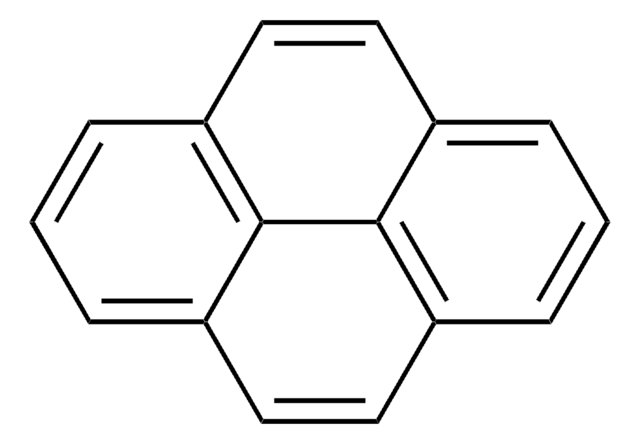Wszystkie zdjęcia(1)
Kluczowe dokumenty
About This Item
Wzór liniowy:
C10H6(CH3)2
Numer CAS:
Masa cząsteczkowa:
156.22
Beilstein:
2039378
Numer WE:
Numer MDL:
Kod UNSPSC:
12352100
Identyfikator substancji w PubChem:
NACRES:
NA.22
Polecane produkty
Poziom jakości
Próba
96%
Formularz
liquid
współczynnik refrakcji
n20/D 1.609 (lit.)
bp
263 °C (lit.)
gęstość
0.982 g/mL at 25 °C (lit.)
ciąg SMILES
Cc1cc(C)c2ccccc2c1
InChI
1S/C12H12/c1-9-7-10(2)12-6-4-3-5-11(12)8-9/h3-8H,1-2H3
Klucz InChI
QHJMFSMPSZREIF-UHFFFAOYSA-N
informacje o genach
human ... CYP1A2(1544)
Szukasz podobnych produktów? Odwiedź Przewodnik dotyczący porównywania produktów
Hasło ostrzegawcze
Warning
Zwroty wskazujące rodzaj zagrożenia
Zwroty wskazujące środki ostrożności
Klasyfikacja zagrożeń
Aquatic Acute 1 - Aquatic Chronic 1
Kod klasy składowania
10 - Combustible liquids
Klasa zagrożenia wodnego (WGK)
WGK 3
Temperatura zapłonu (°F)
228.2 °F - closed cup
Temperatura zapłonu (°C)
109 °C - closed cup
Środki ochrony indywidualnej
Eyeshields, Gloves
Wybierz jedną z najnowszych wersji:
Masz już ten produkt?
Dokumenty związane z niedawno zakupionymi produktami zostały zamieszczone w Bibliotece dokumentów.
Klienci oglądali również te produkty
Tjalling Jager et al.
Environmental science & technology, 51(13), 7707-7713 (2017-06-10)
Efficiently assessing and managing the risks of pollution in the marine environment requires mechanistic models for toxic effects. The General Unified Threshold model for Survival (GUTS) provides a framework for deriving toxicokinetic-toxicodynamic (TKTD) models for the end point survival. Two
Odd G Brakstad et al.
Chemosphere, 204, 87-91 (2018-04-14)
Hydrocarbon biodegradation may be slower in cold Arctic than in temperate seawater, and this will affect the toxicity time window of the hydrocarbons. In this study, the acute toxicities of water-soluble phases of 1,3-dimethylnaphthalene, phenanthrene, fluoranthene, and low energy water-accommodated
Sangwoo Lee et al.
Environmental science. Processes & impacts, 19(9), 1117-1125 (2017-08-08)
Polycyclic aromatic hydrocarbons (PAHs) and alkylated PAHs are known to be major toxic contaminants in spills of petroleum hydrocarbons (oil). Spilled oil undergoes weathering and over time, PAHs go through a series of compositional changes. PAHs can disrupt endocrine functions
Nien-Hsin Kao et al.
Marine pollution bulletin, 97(1-2), 319-332 (2015-06-08)
Three fishing harbors were investigated to study the polycyclic aromatic hydrocarbons in the sediments and trace possible anthropogenic sources by identification of cyclic terpenoid biomarkers. Seventeen terpanes, 10 steranes and 10 bicyclic sesquiterpanes in the marine diesel and the three
Kunal Roy et al.
European journal of medicinal chemistry, 44(5), 1941-1951 (2008-12-27)
A series of naphthalene and non-naphthalene derivatives (n=42) having cytochrome P450 2A6 and 2A5 inhibitory activities, reported by Rahnasto et al., were subjected to QSAR and QAAR studies. The analyses were performed using electronic, spatial, shape and thermodynamic descriptors to
Global Trade Item Number
| SKU | GTIN |
|---|---|
| D170208-1G | |
| D170208-5G | 4061833560471 |
Nasz zespół naukowców ma doświadczenie we wszystkich obszarach badań, w tym w naukach przyrodniczych, materiałoznawstwie, syntezie chemicznej, chromatografii, analityce i wielu innych dziedzinach.
Skontaktuj się z zespołem ds. pomocy technicznej
